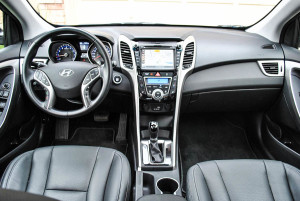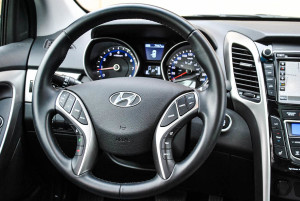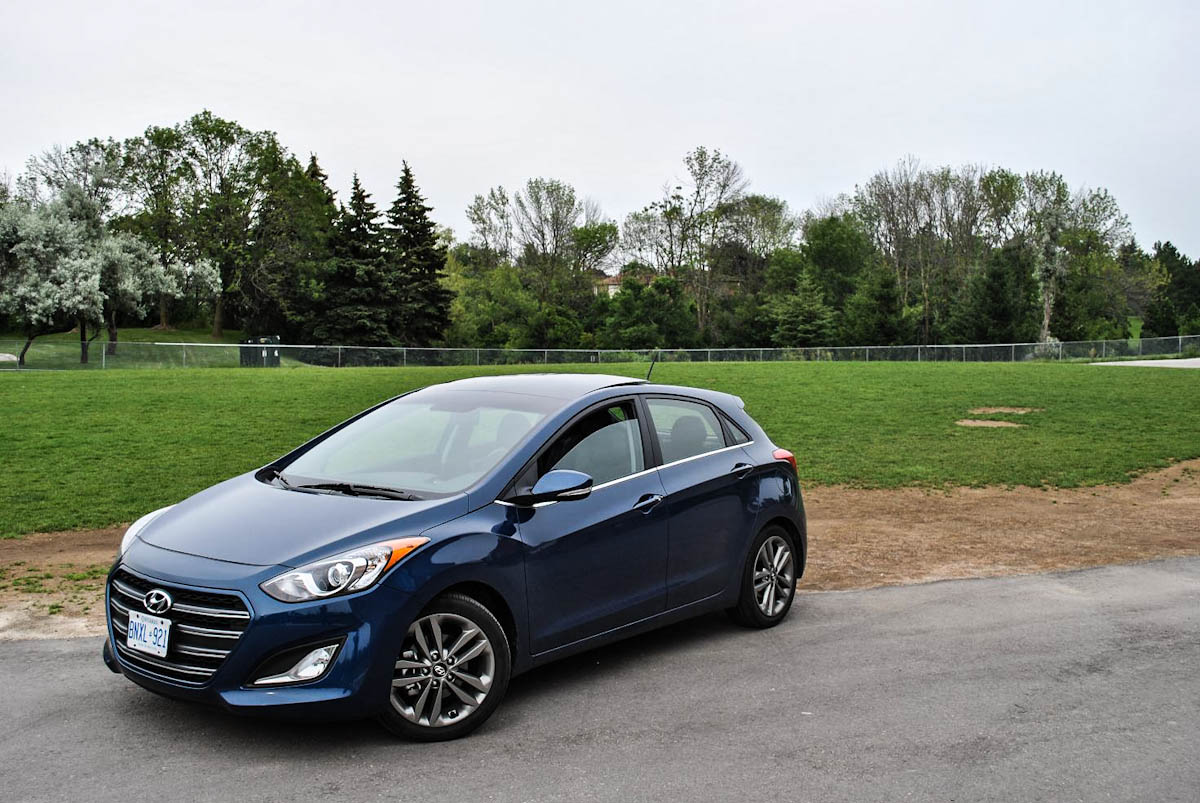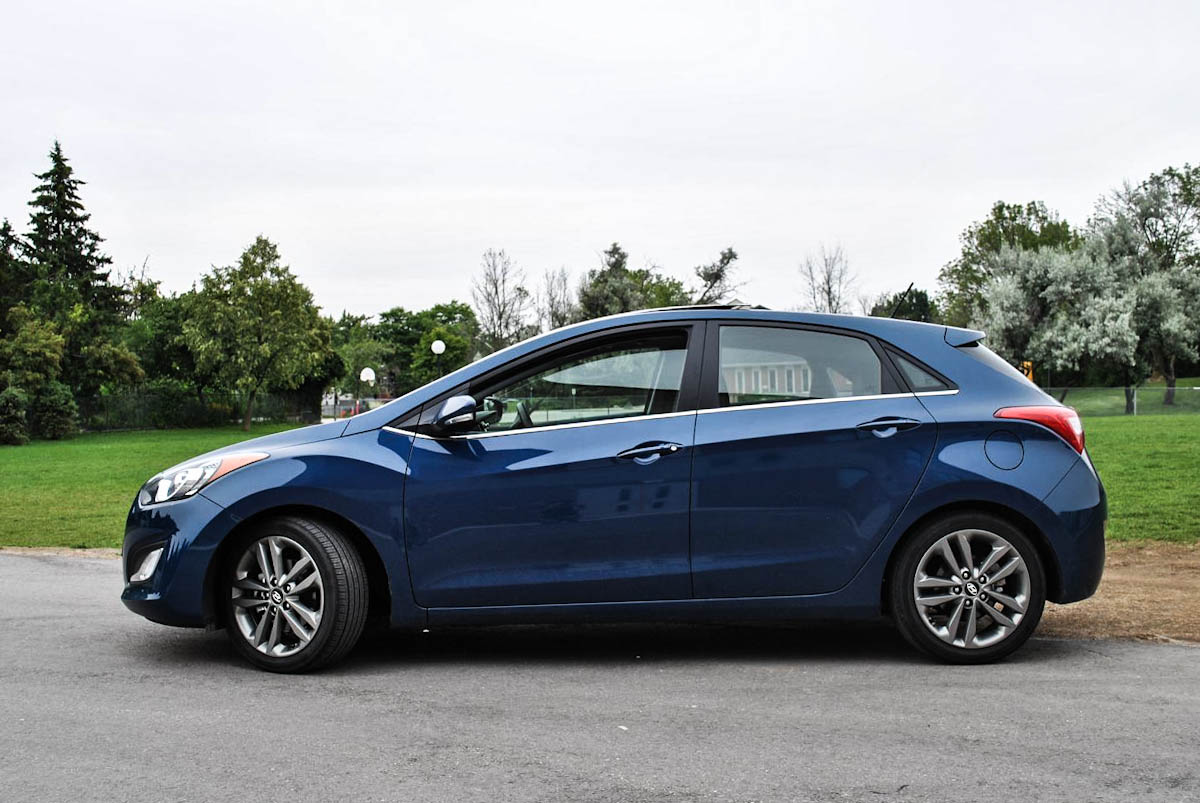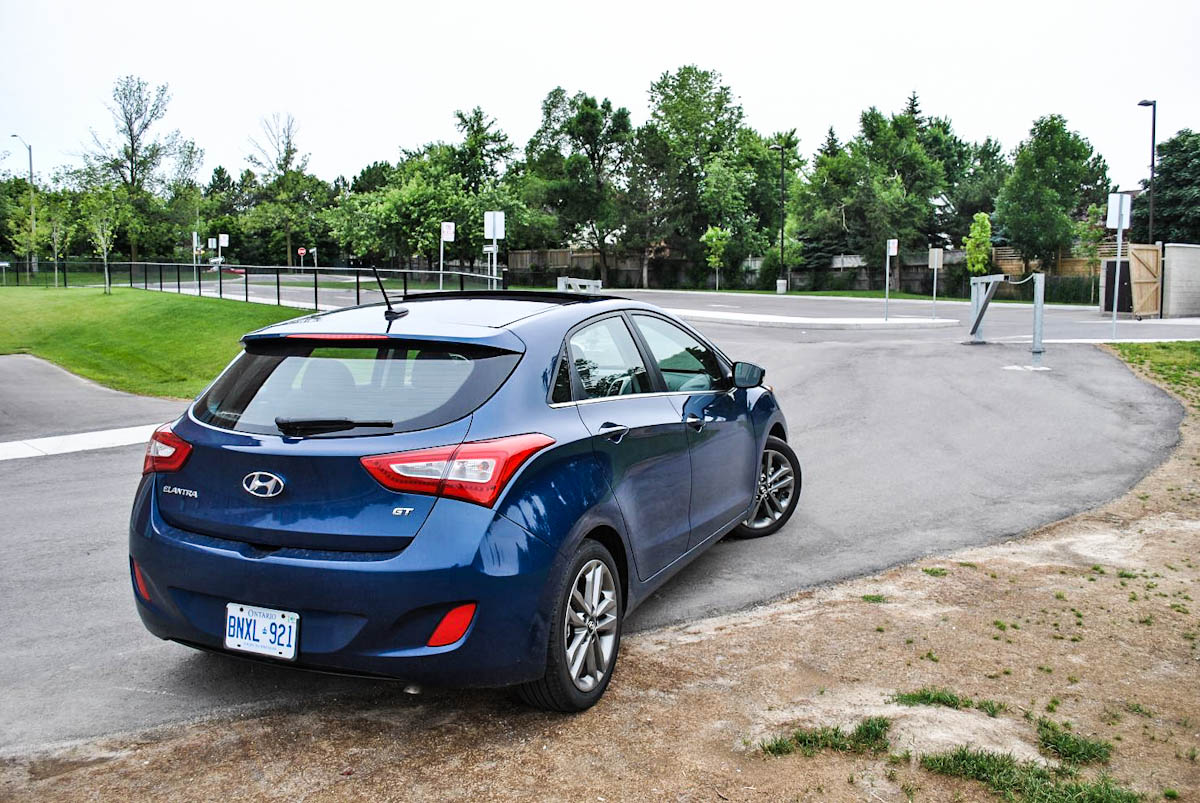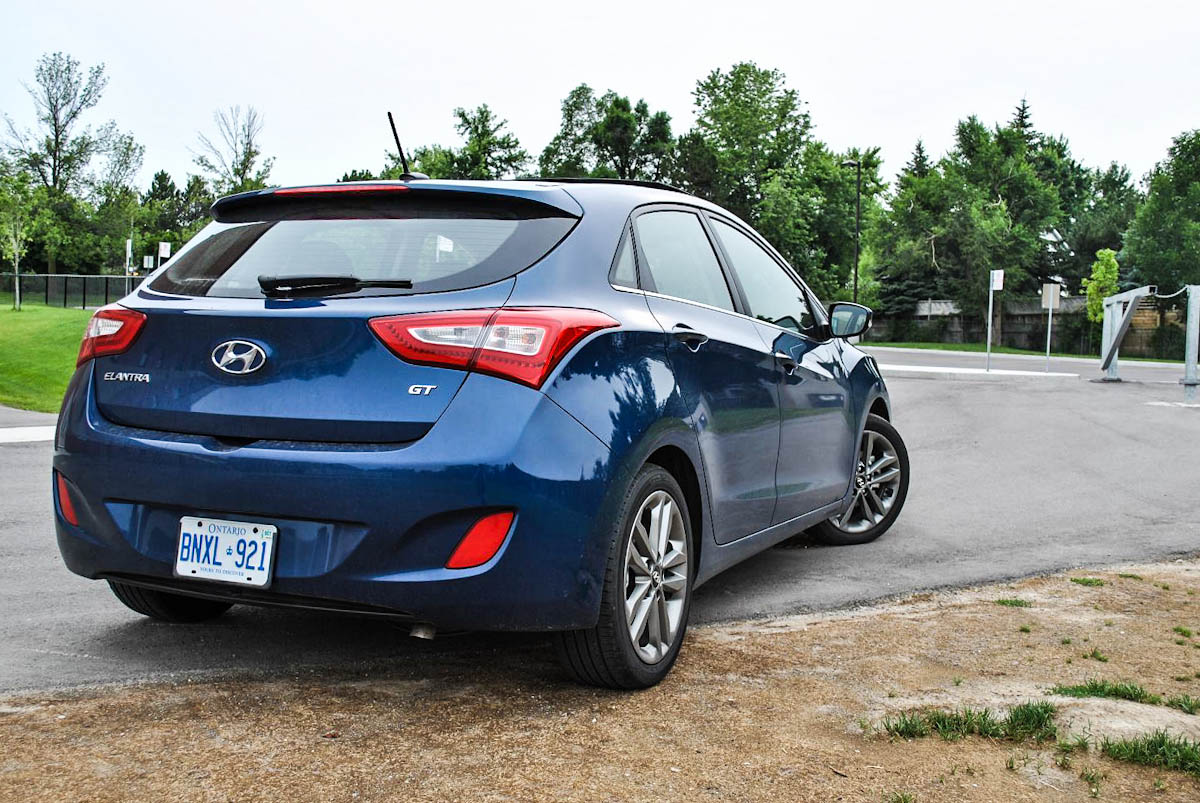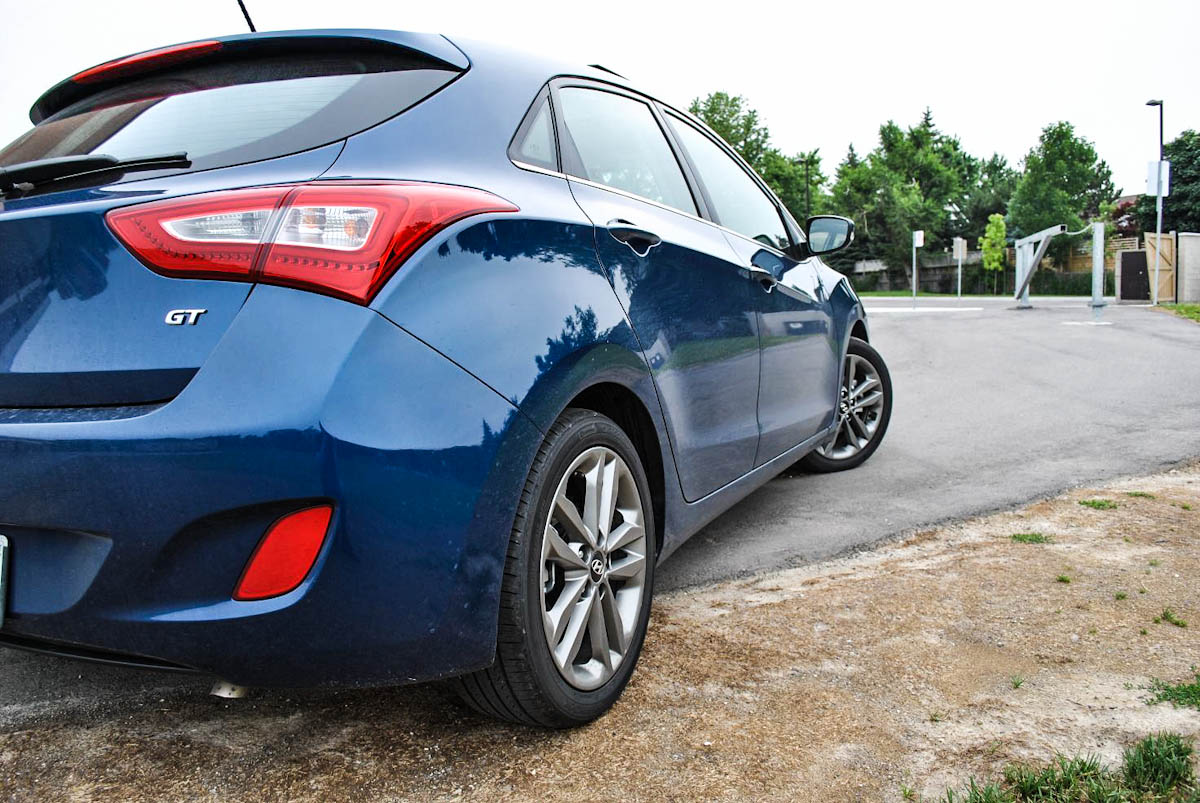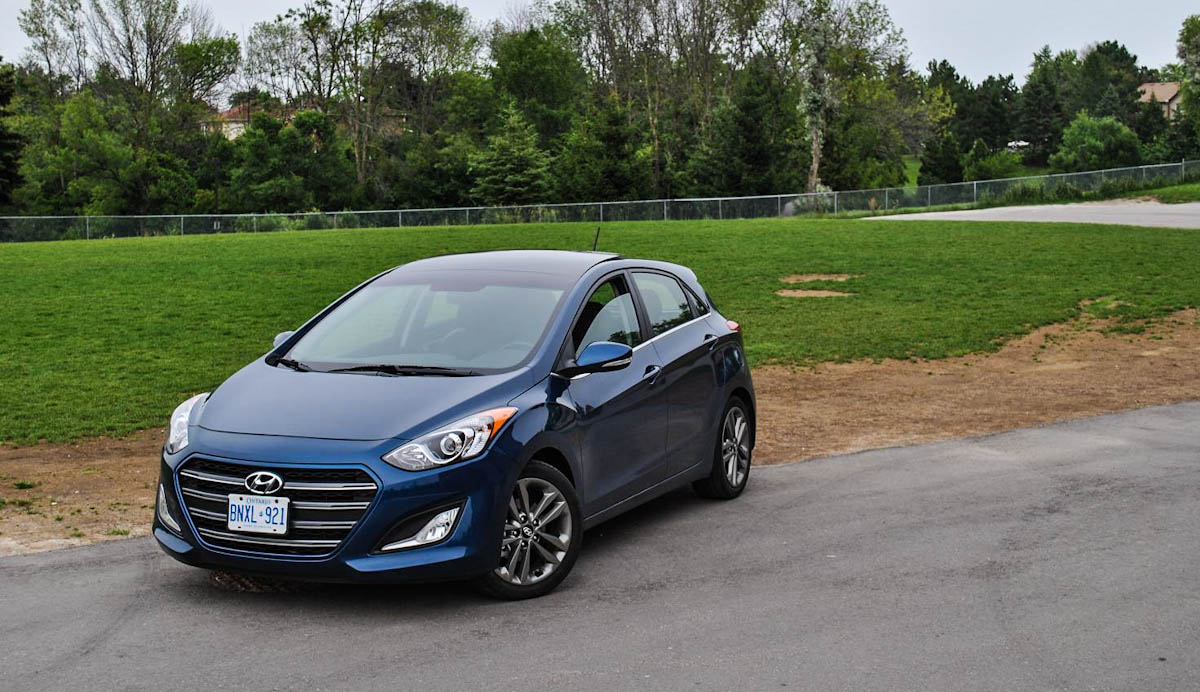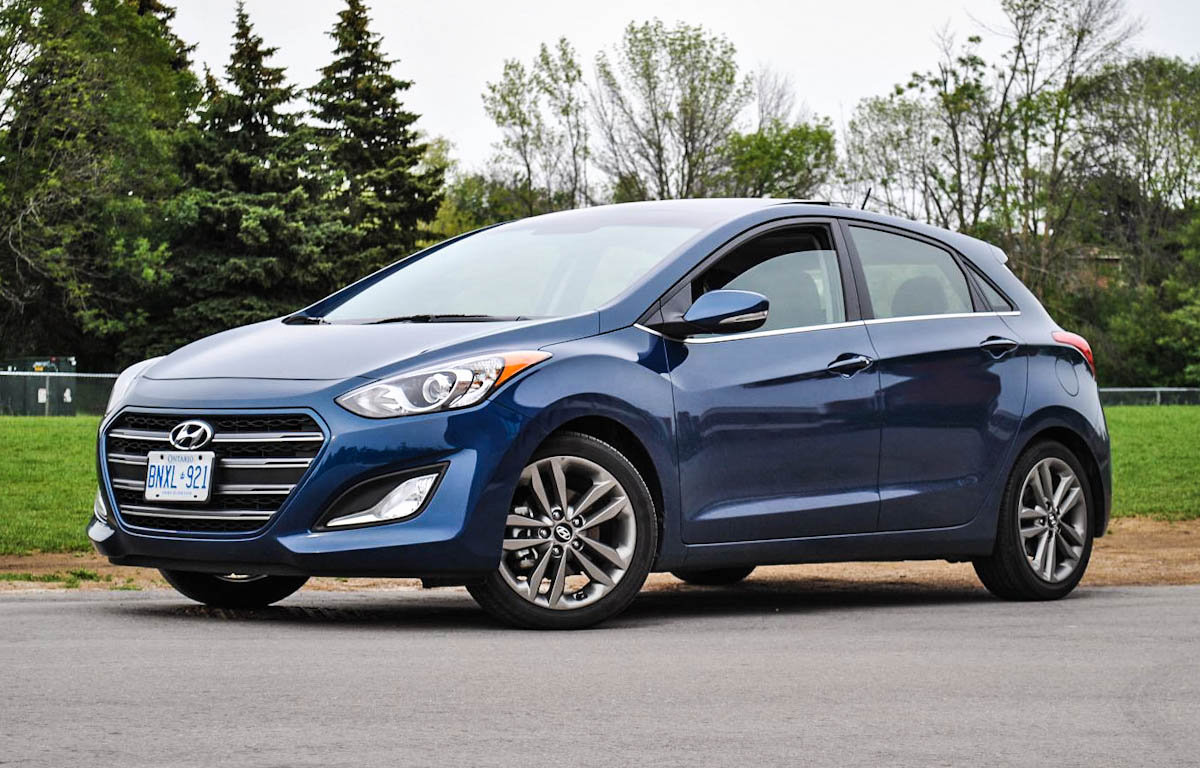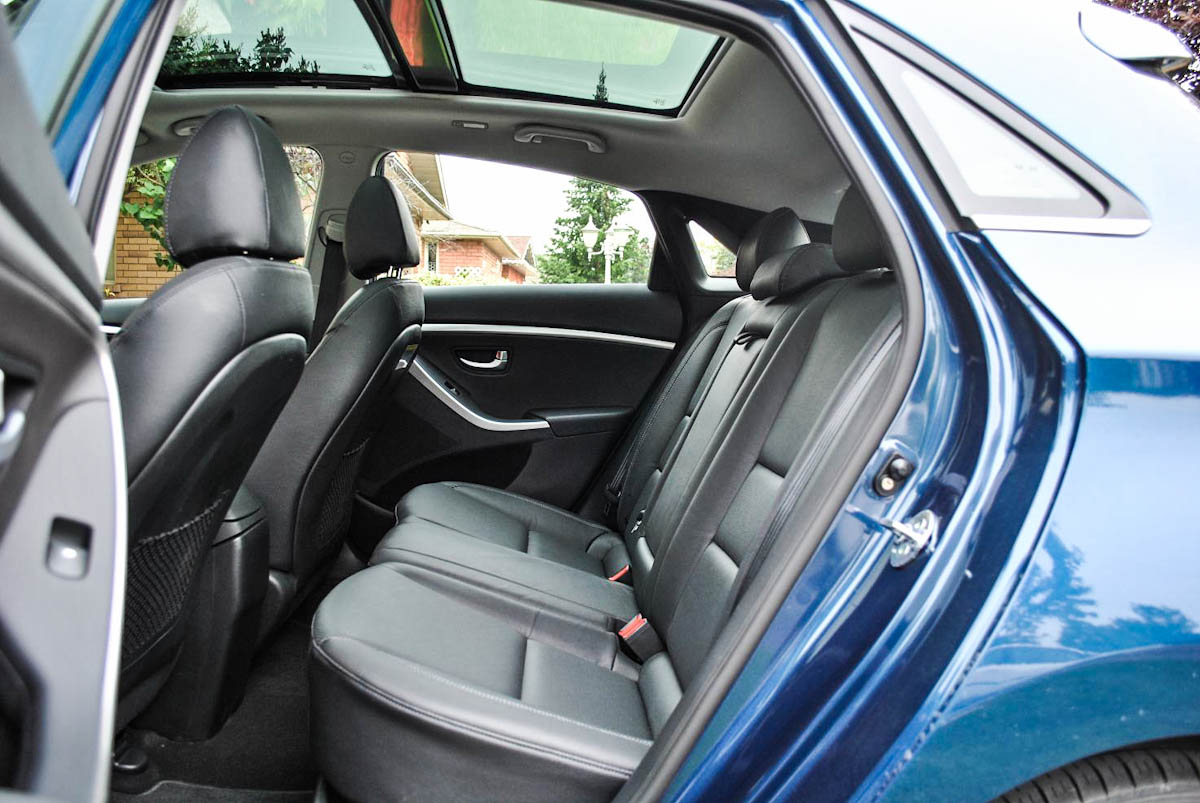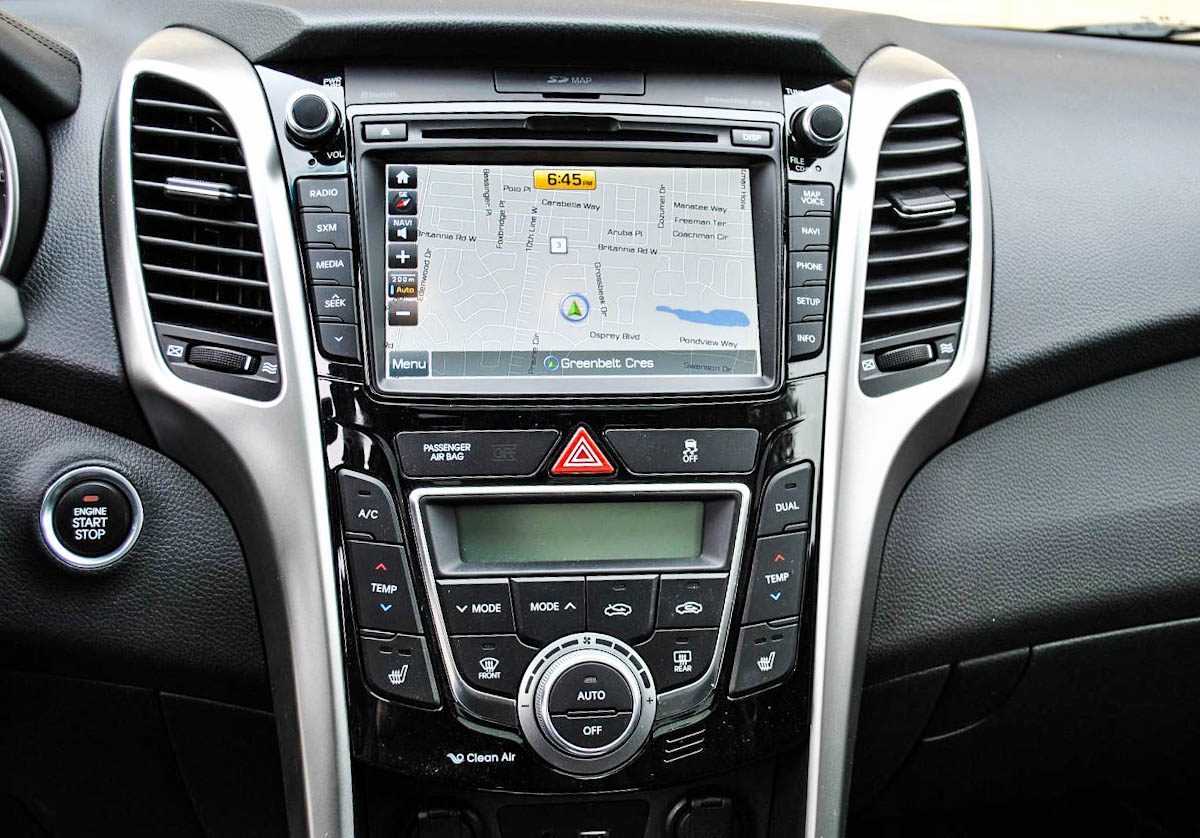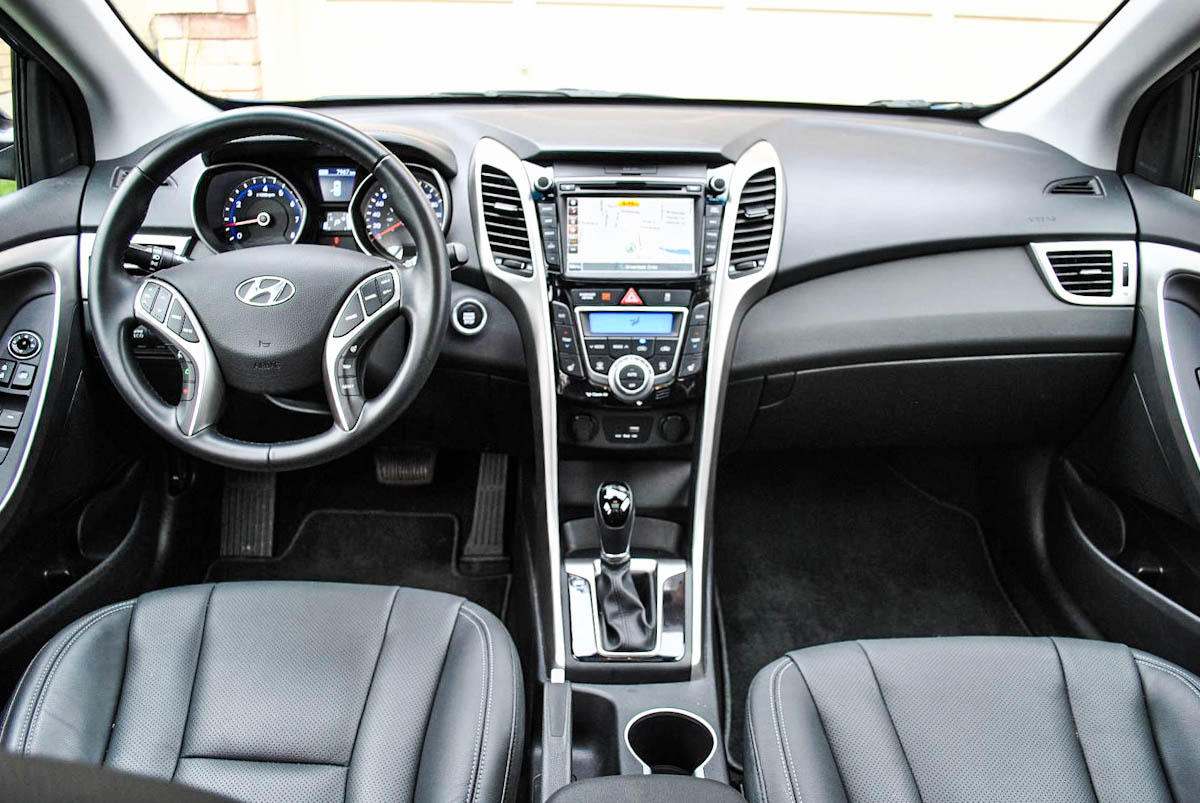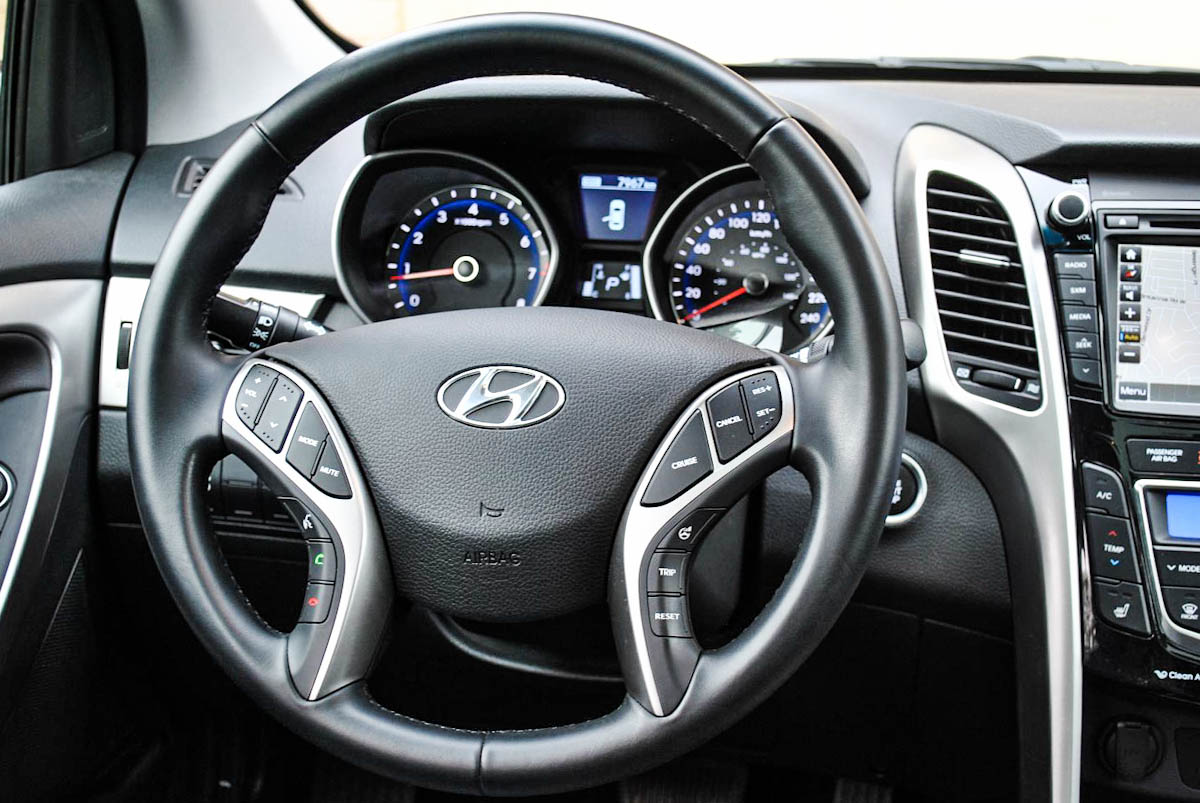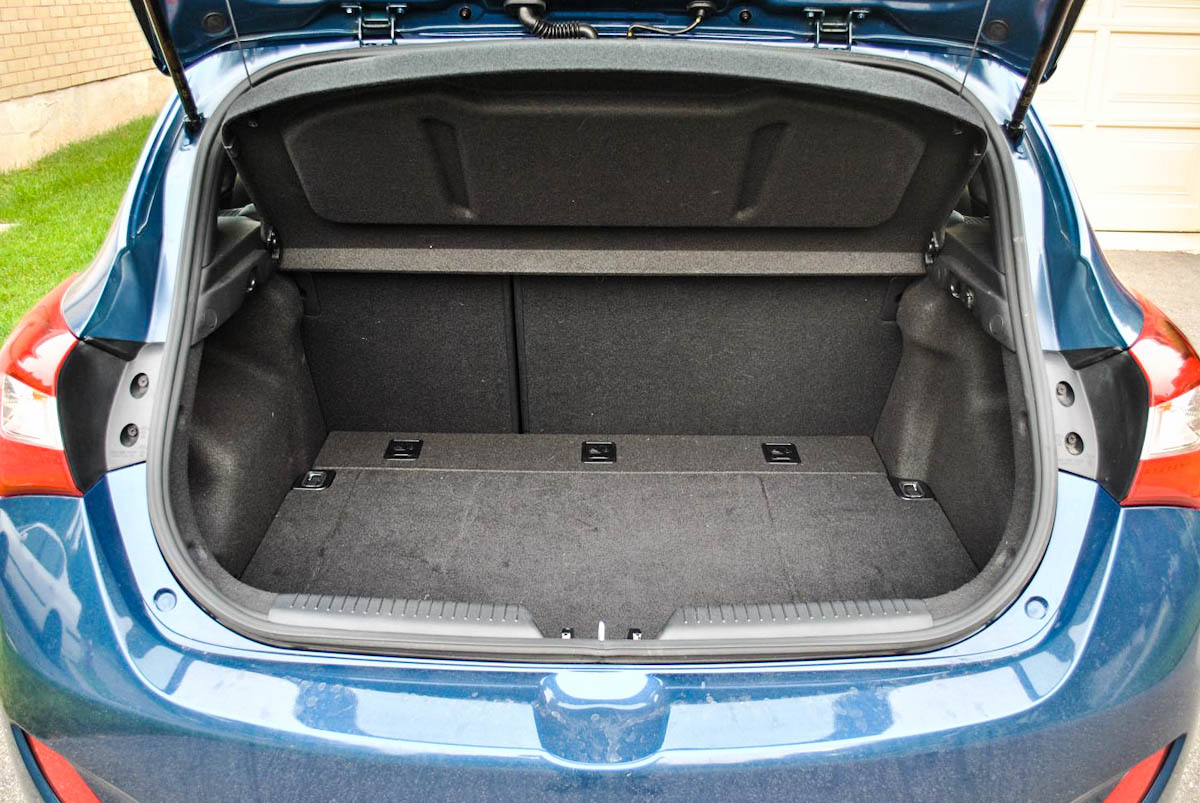Not too long ago, I was looking at some Canadian vs. U.S. car sales statistics that were focused on the apparent love Canadians have for small hatchbacks. There are plenty of theories why this might be the case, but the numbers don’t lie and clearly we, Canadians, have a preference for more practical multipurpose vehicles. Fortunately for us, competition in the compact hatchback segment has been heating up, and we’re starting to see the type of sporty hatchbacks that were so popular in the 80s and early 90s making a strong comeback. Now a force to be reckoned with in the compact segment, Hyundai has upped their game with a sporty hatchback version of the very successful Elantra; the Elantra GT. I spent a week with a fresh 2016 Hyundai Elantra GT to see how it compared to its seasoned competition.
Firstly, I do have a tendency to appreciate the styling of a sporty hatchback, and the Elantra GT is no exception. It’s well proportioned, the lines flow well and it has a playful and sporty look without being too aggressive. The 2016 model has a refreshed front fascia featuring a well-executed version of Hyundai’s corporate grill, along with new LED tail lamps and a handful of other exterior touches. My test car looked particularly good in Windy Sea Blue and sporting nice 17” charcoal grey alloys.
Much like the Elantra sedan, the GT builds its value proposition on its rich set of features and top-notch technology. My favorite feature in the new Elantra is the 7” infotainment system, which also features built in navigation. The system has been tweaked for even better touch-screen response, more intuitive menus and crisper graphics. The team at Hyundai have taken an already great system and made it what I would consider the best in its class. Flanking both sides of the touchscreen are clearly labelled buttons that allow one to quickly flip from one function to another; let’s say from radio to the navigation map in one touch.
Being the top of the line Limited trim model, my tester came with an MSRP of $27,099, which is a little less than a loaded Mazda3 or Volkswagen Golf. At this trim level you get the full-fledged Elantra feature set that has helped propel the car to success. Leather heated front and rear seats, dual climate control, proximity key entry, leather wrapped steering wheel with audio controls, a 180W sound system, and a favorite of many buyers; a massive glass panoramic sunroof. I am usually okay with not having a sunroof, but I have to admit that the panoramic roof in the Elantra is very well executed and really helps make the interior feel even larger than it is.
Sunroof or no sunroof, the interior of the Elantra is actually surprisingly large. Rear legroom and headroom were more than adequate for my 5’11” frame and there’s plenty of convenient storage up front. The real benefit of a hatchback is usually its flexible cargo space, and the Elantra GT is no exception. The cargo area is a very generous size and will easily handle most typical loads; easily folding the rear seats flat extends the cargo area that much more, and with the added height from the hatchback design, the Elantra GT is ideal for awkward and bulky loads. The only real distraction from the Elantra’s otherwise very pleasant and practical interior are the front seats, which I found are a too hard and flat for my tastes. It’s also worth noting that Hyundai had made good use of soft touch low-sheen plastics that might not be considered luxurious, but are at least as nice, if not better, than similar cars in the segment.
Whenever I see the letters “GT” tacked onto a car, whether I’m right or not, I usually associate it with being the sporty version. In this case, I am right and the folks at Hyundai decided to add a little spice to the hatchback version of the standard Elantra. The GT is still powered by the same 173 horsepower 2.0L direct-injected 4-cylinder and 6-speed automatic as the standard Elantra. The GT’s sporting edge lies underneath the car with bigger sway bars, stiffer shocks and a few other suspension tweaks.
These changes give the GT a more firm and agile feeling compared to the standard Elantra. That does mean that the GT handles those twisty backroads and highway on-ramps with a little more confidence, but it also means a harsher ride, especially on rough city streets. As a driving enthusiast, I appreciate the efforts in making the car more fun to handle, but the fault that remains in the GT’s otherwise pleasant dynamics is the steering. Regardless of whether I set the electronic driver selectable steering mode (DSSM) to sport, comfort or normal, there is almost no feedback or road feel communicated up to the driver. The modes only change the steering’s weight and the GT’s otherwise tight chassis leaves me craving some real feedback through that wheel.
On the highway, the Elantra GT’s harsher ride is minimized and the car feels well planted and composed. Noise levels are slightly lower than the competitors I’ve tried, and I am certain that swapping the rather hard wearing factory tires for some quieter touring tires would make a noticeable improvement as well. The 2.0L is responsive at all speeds and while not the most powerful car in its class, it certainly feels like one of the quicker options out there. It also returned favorable fuel economy with my average for the week coming in at 7.6L/100kms, mostly in rush hour commuting. That’s right on par with my Mazda3 Sport GT numbers and notably better than the last Subaru Impreza I drove.
The 2016 Hyundai Elantra GT is really well-equipped to do battle with its tough competition. The truth is, I think every car in this particular segment has its place in the market and it’s all about deciding which one is your best fit. The Elantra GT makes a really strong case for itself by offering an impressive feature set, the best infotainment technology in the class and a sporty flare, all-the-while keeping a little more change in your pocket.


